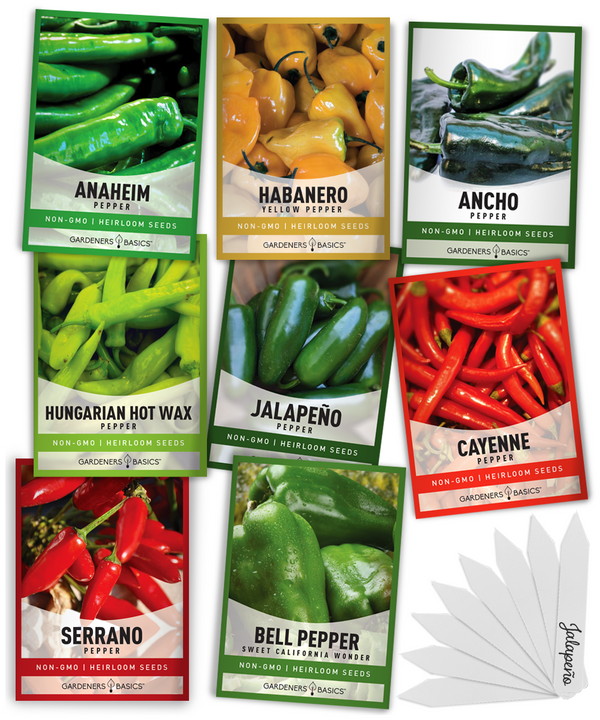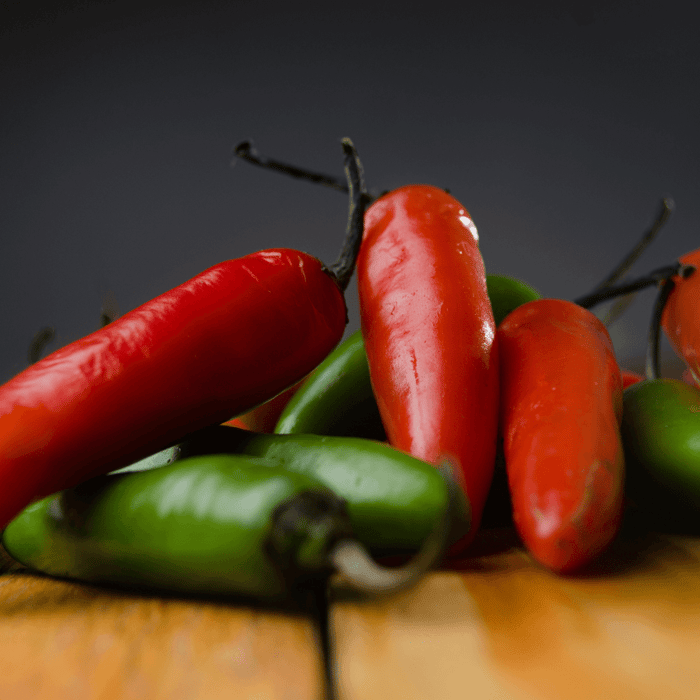Jalapeños are one of the most popular chili peppers in the world. These peppers are widely used in different cuisines as a flavor enhancer, adding a kick of heat to various dishes. People often wonder are bigger or smaller jalapenos are hotter. In this article, we aim to explore this topic in detail.
Explanation of is bigger or smaller jalapenos hotter
The size of
jalapeños is a crucial factor that affects their spiciness level. Many people assume that bigger jalapeños are milder and smaller ones are spicier.
However, this is not always true. The heat level of
jalapeño peppers depends on various factors such as environmental conditions, ripeness at harvest time, storage conditions, and amount of capsaicin.
A brief history of Jalapenos and their popularity in Cuisine
Jalapenos originated in Mexico and were first cultivated by the Aztecs over 6000 years ago. The word "jalapeno" comes from Jalapa, a city in Veracruz where these peppers were traditionally grown. Jalapeños gained worldwide popularity after Spanish conquistadors introduced them to Europe in the 16th century.
Today, jalapenos are widely used in different cuisines worldwide, such as Mexican, Tex-Mex, Indian, Thai, Korean, and Chinese cuisine, to name a few examples. They add unique flavors to salsas or dips like guacamole or hummus and tacos or fajitas dishes requiring a spicy kick.
Jalapeño is an essential ingredient for enhancing flavors in different dishes worldwide due to its popularity across different cultures. There has been some debate over whether bigger or smaller jalapeños are hotter; however, in this article, we will break down facts supported with evidence and studies that will help to answer this question more accurately. Not only are jalapenos used all over the world now,
jalapenos are grown all over the world now too.
Jalapeno Scoville Scale
Definition of Scoville Scale and its use in measuring spiciness
The Scoville scale is a measurement that determines the heat level of peppers based on the amount of capsaicin they contain. This scale was developed by American pharmacist Wilbur L. Scoville in 1912, and it is still used today as a benchmark for spiciness. Capsaicin is the chemical compound responsible for the heat in peppers, and the higher its concentration, the spicier the pepper.
The Scoville scale ranges from 0 to over 2 million SHU (Scoville Heat Units). At the lower end of this range are sweet pepper,s while at the higher end are Carolina Reaper and Trinidad Moruga scorpion, considered some of the hottest peppers known to man.
Comparison of jalapeno's Scoville rating to other peppers
Jalapenos have a moderate heat level with an average Scoville unit of 2500-8000 SHUs. Compared to other commonly consumed chili peppers, jalapenos are milder than serranos (10,000-23,000 SHUs) but hotter than poblano pepper (1000-1500 SHUs).
In addition to their moderate heat level, jalapenos possess unique flavor profiles making them a popular choice for many dishes worldwide. They have earthy undertones with a slightly sweet taste and a distinct crunch making them an ideal ingredient for salsas or as toppings on pizzas or sandwiches.
Explanation of how size affects the spiciness
The size of a jalapeno can affect its spice level. While there isn't always a direct correlation between size and spice intensity, larger jalapenos tend to be less spicy than smaller ones. This is because capsaicin is concentrated in the
seeds and membranes inside the pepper, and smaller peppers have more of these parts relative to their overall size.
Additionally, environmental factors such as temperature and sunlight can affect capsaicin levels in peppers, which could also influence the spiciness of jalapenos of different sizes. Therefore, the heat level of jalapenos can vary depending on their size and growing conditions.
The Role of Capsaicin
When we talk about the heat of jalapenos, we talk about capsaicin. Capsaicin is a chemical compound found in the veins or ribs of peppers like jalapenos, giving them a spicy flavor.
It is produced as a defense mechanism against herbivores and fungi but has become a popular ingredient in cuisines worldwide. Capsaicin stimulates receptors in your mouth and throat that detect heat and pain.
Specifically, capsaicin binds to and activates the TRPV1 receptor responsible for sensing hot temperatures. This creates a sensation of heat that many people find enjoyable but can also be uncomfortable or even painful in high doses.
How Capsaicin Affects the Body and Creates a Sensation of Heat
When you eat a jalapeno pepper (or any spicy food), capsaicin molecules bind to TRPV1 receptors on the surface of nerve cells in your tongue and mouth. This signals to your brain that you've just eaten something hot, triggering physiological responses such as sweating, increased heart rate, flushed skin, and even tears. Interestingly, some recent studies have shown that consuming spicy foods can have some health benefits.
Capsaicin has been found to reduce inflammation in the body by inhibiting certain enzymes that cause swelling and pain. It has also been linked to increased metabolism, which could aid weight loss efforts.
Pepper Seed Assortment | 8 Variety Pack

$15.95
8 Pepper Seeds Variety Pack – Heirloom, Non-GMO, Open-Pollinated, Non-Hybrid Seeds Elevate your garden with our 8 Pepper Seeds Variety Pack! This premium selection includes a mix of heirloom, open-pollinated, non-hybrid, non-GMO pepper seeds, perfect for beginner and experienced gardeners.… read more
Relationship Between Capsaicin Levels and Pepper Size
Capsaicin levels can vary widely among different types of peppers based on factors like soil quality, climate conditions during the growth period, or the amount of water received during the growing period; however, generally speaking, smaller peppers tend to have more concentrated amounts per unit size than larger ones. This could mean smaller jalapenos may be hotter than larger ones, and all other factors are constant. It is worth noting that other facto, rs such as pepper's ripeness, are age and storage conditions before consumption, and even genetics can also significantly affect heat levels.
Therefore, it is essential to remember that while capsaicin plays a significant role in determining the spiciness of jalapeños, many other variables are also at play. Overall, it's best to exercise caution when consuming spicy foods and start with small amounts until you know your personal tolerance level.
Factors Affecting Jalapeno Heat
Environmental Factors that Affect Jalapeno Growth
Several environmental factors can affect the heat level of jalapenos. One of the most significant factors is the amount of sunlight and temperature the pepper receives during its growth cycle.
The ideal temperature for growing jalapenos ranges from 75 to 85 degrees Fahrenheit, and peppers that receive an adequate amount of sunlight tend to be hotter than those grown in areas with less sun exposure. Another factor that affects the heat level is soil quality.
Jalapenos grown in nutrient-rich soil produce hotter peppers than those cultivated in less fertile soil. Additionally, jalapenos grown at higher altitudes typically have a more intense flavor profile due to the cooler temperatures, which slow down their growth rate.
The Ripeness of the Pepper at Harvest Time
The ripeness of a jalapeno can also determine its spiciness level. Typically, a
green jalapeno is less spicy than one that has ripened red color.
This is because as jalapenos mature on the vine, they produce more capsaicinoids (the chemical compound responsible for spiciness) as they prepare for reproduction. Additionally, if harvested prematurely before they reach full maturity or are not given time to fully ripen before picking, even mature peppers will be milder in taste and not reach their full potential on the Scoville scale.
The Age and Storage Conditions of the Pepper Before Consumption
After harvesting jalapenos, storing them properly before consumption is essential to retaining their heat levels. As time passes after harvest, peppers gradually lose their spice levels unless they are dried or pickled. If you buy fresh jalapeños from your local grocery store or farmer's market, inspect them carefully.
Peppers that have been stored for too long may lose their heat levels. Alsostoringre fresh jalapenos in a cool, dry place, avoiding exposure to moisture or extreme temperature, is best.
While the size of jalapenos can indicate their spiciness level, other factors can determine the final heat level of these peppers. Consequently, understanding these environmental factors and their impact on jalapeno growth is critical in understanding how to grow and consume the perfect pepper significance vs. Smaller Jalapenos: Which is Hotter?
Analysis of different studies on the subject
Numerous studies have been conducted to determine whether bigger or smaller jalapenos are hotter. Some studies suggest that smaller jalapenos are hotter because they have a higher concentration of capsaicin, the chemical compound responsible for the spicy sensation. However, other studies have found that larger jalapenos can be just as hot or even hotter due to their maturity level and growing conditions.
One study conducted by Texas A&M University found that there was no significant difference in heat levels between big and small jalapenos. The study analyzed the capsaicin levels in pepper sizes and concluded that it was more important to consider factors such as ripeness, growing conditions, and storage when determining heat level.
Comparison between bigger and smaller jalapenos in terms of heat level
When comparing bigger and smaller jalapenos in terms of heat level, it's important to note that size alone does not determine spiciness. The Scoville scale measures spiciness based on capsaicin concentration regardless of pepper size.
Therefore, a smaller pepper with a higher concentration of capsaicin may be spicier than a larger one with lower levels. However, some chefs argue that larger peppers tend to be milder because they have more time to mature.
This means they may have fewer seeds or less pith (the white membrane inside the pepper), which can also contribute to spice levels. On the other hand, some people believe that smaller peppers are hotter because they contain more seeds with higher concentrations of capsaicin.
Explanation of why bigger or smaller jalapeños can be hotter depending on various factors
The size of the jalapeno is just one factor among many that can affect its heat level. Other factors include pepper's ripeness per harvest time, growing conditions, age, and storage conditions. For example, jalapenos grown in hotter climates may be spicier than those grown in cooler ones due to the stress of high temperatures.
Additionally, jalapenos harvested earlier when they are still green will typically be mild than those allowed to ripen and turn red on the vine. The storage conditions of a jalapeno can also affect its spiciness.
Peppers stored for long periods or at higher temperatures may lose some heat over time. While size contributes to jalapeno spiciness, it's important to consider all other factors before determining which peppers will be hotter.
 Conclusion - Are Bigger or Smaller Jalapenos Hotter
Conclusion - Are Bigger or Smaller Jalapenos Hotter
After analyzing several studies and factors that affect the heat level of jalapenos, it can be concluded that bigger or smaller jalapenos are not inherently hotter than each other. Instead, the spiciness of jalapeno is determined by various factors such as ripeness, storage conditions, and even environmental factors. It is important to note that the Scoville rating indicates a pepper's heat le. Still, it cannot accurately predict how spicy a specific jalapeno will be.
Additionally, capsaicin plays a significant role in determining the heat level in peppers like jalapenos. While there may not be a clear answer to whether bigger or smaller jalapenos are hotter, there are ways to control and manipulate the spiciness level.
For instance, allowing the jalapeno to fully ripen before harvesting can increase its capsaicin levels and thus make it spicier. Similarly, storing peppers in warmer conditions can also increase their capsaicin levels.
While size does not necessarily determine how hot a jalapeno will be, several other factors significantly determine its spiciness level. With proper understanding and manipulation of these factors, one can enjoy deliciously spicy cuisine without necessarily having to sacrifice flavor for heat.






 Conclusion - Are Bigger or Smaller Jalapenos Hotter
Conclusion - Are Bigger or Smaller Jalapenos Hotter

